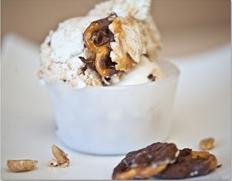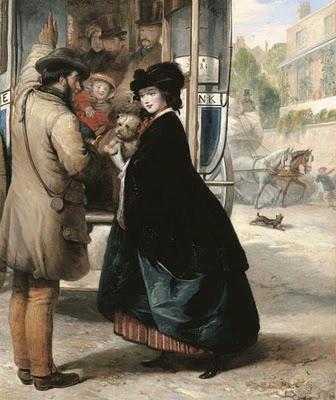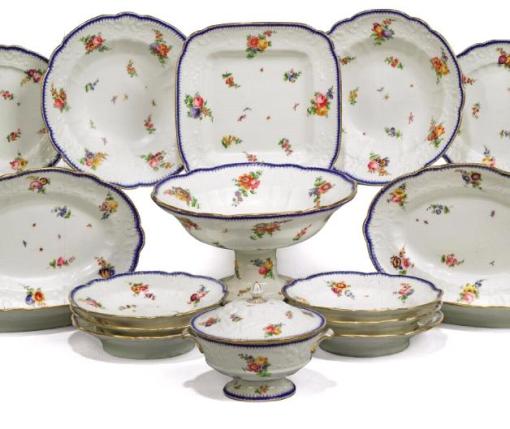In 1904 the artist Rose Barton wrote about the London she knew and contributed 61 of her paintings towards the endeavor. Click here to read the PDF document of her 207 page book, Familiar London. The document does not include her paintings, a few of which sit on this page. I like her moody paintings, which depict the rainy, foggy London of my memory.
February 9, 2012
Themed Photos on Old Picture
Posted by Vic under 20th Century, Historic photographs | Tags: Queenie Ladovitch |Leave a Comment
Old-Picture.com is a site that offers views of American life way back when. The themed photos section is divided in years, offering images as early as the 1850s. This image of Queenie Ladovitch comes from the section on Beauty.
November 3, 2011
The Tumbling Art Market: So What ARE the Rich Doing With Their Money?
Posted by Vic under 20th Century, 21st century, Auction, Uncategorized | Tags: Christie's |[3] Comments
According to Bloomburg, Christie’s International posted its lowest sales total in two years for Impressionist and modern art in New York as buyers shunned works by Degas and Picasso amid tumbling financial markets. Pre-sale estimates were said to be too aggressive.
“The quality could not be any worse and the estimates could not be any higher,” said Alberto Mugrabi, a New York- based art dealer and collector. “This is what happens when you have the combination of these things.”The biggest casualty was Edgar Degas’ bronze sculpture of a teenage ballerina, “Petite danseuse de quatorze ans,” estimated to bring as much as $35 million. A 1935 portrait of Pablo Picasso’s lover Marie-Therese Walter, estimated to fetch $12 million to $18 million, drew no bids.
“An Henri Matisse painting of a woman in a purple robe from the estate of Hollywood talent agent Lew Wasserman and his wife Eddie also failed to sell. Its presale estimate was $4 million to $6 million. Another flop was Giacometti’s knobby sculpture of a standing woman, “Femme de Venise VII,” which was expected to reach $10 million to $15 million.”
The sale was expected to bring in between $212 million and $304 million, but brought in just $140.8 million. It was the lowest sales total in two years, according to Businessweek
Read more:
September 5, 2011
The Corseted Waist
Posted by Vic under 19th Century, 20th Century | Tags: corsets, Ethel Granger, Historical Fashion, Ioana Spangenberg |Leave a Comment
Have you ever had a part of your body restricted? Your foot? Waist? Have you ever worn a corset? I must admit to trying Spanx now and then and feeling constricted. But Ethel Granger takes the corset to another level.
Vogue Italia shows an image of Ethel when she was younger. Click on this link to see the article.
How small is Ethel? This image shows the smallest sized corset waist in the late 19th century.
To show off a corset to the best advantage, the smallest size available in a corset was usually put on display just like modern shops where the small sizes are always put on the mannequins. – Corsets and Crinolines
Update: Lest one thinks that corsets are a thing of the past, here is Romanian-born model Ioana Spangenberg, with a waist of 20 inches. Click here to read more about her.
July 5, 2011
Fun Facts in Honor of July ‘National Ice Cream Month’
Posted by Vic under 18th century, 19th Century, 20th Century, 21st century, American History, Regency era, Uncategorized | Tags: cowabunga ice cream, ice cream facts, national ice cream month |[4] Comments
Gentle readers, while this blog is not commercial (and this press release is), fun facts about ice cream are always welcome! Cowabunga Ice Cream company cites cool facts, fun figures and tasty trends about ice cream!
In 1984, President Ronald Reagan designated July as National Ice Cream Month and the third Sunday of the month (July 17, 2011) as National Ice Cream Day. “According to The International Ice Cream Association, the U.S. ice cream industry generates billions in annual sales and provides jobs for thousands of citizens,” notes Ellen Schack, founder and CEO of Cowabunga Ice Cream. “They report that about 9% of all the milk produced by U.S. dairy farmers is used to produce ice cream, contributing significantly to the economic well-being of the nation’s dairy industry.”Did you know?…
- Each American consumes a yearly average of 23.2 quarts of ice cream, ice milk, sherbet, ices and other commercially produced frozen dairy products.
- The Northern Central states have the highest per capita consumption of ice cream at 41.7 quarts.
- More ice cream is sold on Sunday than any other day of the week.
- Ice cream and related frozen desserts are consumed by more than 90 percent of households in the United States. (Source: Mintel)
- Ice cream consumption is highest during July and August.
- In 1984, President Ronald Reagan designated July as National Ice Cream Month and the third Sunday of the month as National Ice Cream Day.
- The most popular flavor of ice cream in the United States is vanilla (27.8%), followed by chocolate (14.3%), strawberry (3.3%), chocolate chip (3.3%) and butter pecan (2.8%). (Source: The NPD Group’s National Eating Trends In-Home Database)
- Children ages two through 12, and adults age 45 plus, eat the most ice cream per person.
- The average number of licks to polish off a single scoop ice cream cone is approximately 50.
- The History of Ice Cream and the Cone:
- The true origin of ice cream is unknown, however reports of frozen desserts have been reported as far back as the second century B.C.
- The first official account of ice cream in America was recorded in 1700 from a letter written by a guest of Maryland Governor William Bladen.
- In 1812, Dolley Madison served a magnificent strawberry ice cream creation at President Madison’s second inaugural banquet at the White House.
- The first ice cream cone was produced in 1896 by Italo Marchiony. Marchinoy, who emigrated from Italy in the late 1800’s, invented his ice cream cone in New York City. Around the same time a similar creation, the cornucopia, was independently introduced at the 1904 St. Louis World’s Fair.
- Stephen Sullivan of Sullivan, Missouri was one of the first independent operators in the ice cream cone business. In 1906, Sullivan served ice cream cones at the Modern Woodmen of America Frisco Log Rolling in Sullivan, Missouri.
Sources: International Ice Cream Association, a constituent organization of the International Dairy Foods Association (www.idfa.org )
Post, courtesy of Cowabunga, which has recently has gone national through its online storefront at http://www.CowabungaIceCream.com. The firm originally operated at the Jersey Shore community.
More posts on the topic:
- Storing Ice and Making Ice Cream in Georgian England, Jane Austen’s World
- Summer Coolers, Regency Style: Ice Cream to Melt Over, History Hoydens
- Regency Hot Spots: Gunter’s: Regency Reader
- Lemon Ice: The Jane Austen Centre
- What A Pity it Isn’t Illegal! Word Wenches
- Ann Elliot’s Apricot Ice Cream: Jane Austen Centre
- Keeping Cool in the Antebellum South
- *John Bull and his Family at an Ice Cafe: University Library, Newcastle University
October 18, 2010
Edwardian Beauties
Posted by Vic under 20th Century, Edwardian era | Tags: YouTube video |[2] Comments
Read an article about professional Edwardian beauties on Edwardian Promenade.
October 17, 2010
Manchester Street Scene 1901
Posted by Vic under 20th Century, Edwardian era, Victorian era | Tags: Manchester Street Scenes, YouTube video |1 Comment
This scene was filmed the year Queen Victoria died.
- Read about Victorian Manchester in this link from Manchester UK.
- Manchester before and after the Great War.
September 20, 2010
Victorian and Edwardian Paintings
Posted by Vic under 19th Century, 20th Century, Edwardian era, Victorian era[2] Comments
This web site, Victorian/Edwardian Paintings is well worth a visit! Most of the paintings and painters are obscure or unknown, but their images are evocative of a past age. Click here to enter the site or click on the captions to read more about each painting.
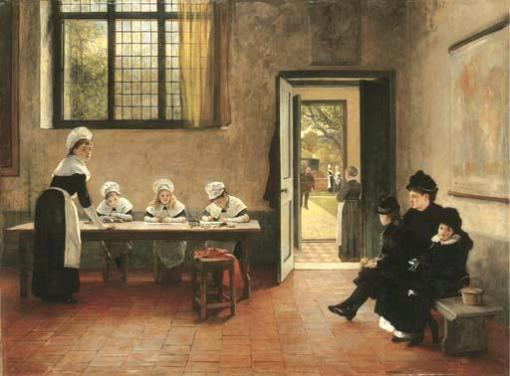 Orphans, George Adolphus Storey
Orphans, George Adolphus Storey
August 29, 2010
PBS Arts: Exhibiting the Best of PBS Art
Posted by Vic under 21st century | Tags: PBS Arts, Post Hurricane Katrina |Leave a Comment
Ruin and Revival: In the wake of Hurricane Katrina in 2005, creativity thrived and helped to heal a community crushed by disaster. Now, five years later, artistic works across New Orleans grow where structures crumbled and lives were washed away. 
Click on this link to enter PBS’s new site, which features the best of their art specials: http://www.pbs.org/arts
July 10, 2010
The Earl of Spencer Holds a Garage Sale
Posted by Vic under Auction | Tags: Althorp Attic Sale, Earl of Spencer |[2] Comments
Britain’s Earl Spencer has sold £21.1 million worth of furnishings to fund repairs to his stately home.
The earl – who is the brother of Britain’s late Princess Diana – reportedly has a £10 million bill to pay for a new roof on Althorp, the family home in Northampton, so was forced to get rid of many artefacts, including a £9 million painting, to raise the funds. – Earl Spencer’s Auction
Lot Description
A NANTGARW (LONDON DECORATED) PART DESSERT-SERVICE
CIRCA 1820, IMPRESSED MARKS
Painted in the Sèvres-style with bouquets and insects within flower and scroll cartouches and gilt and blue feuilles-de-choux borders, comprising:
A footed comport
A circular sauce tureen, cover and stand
Three shaped-square dishes
Two large circular dishes
A medium sized circular dish
Six small dishes
Four oval dishes
Ten plates
The items truly represented an attic sale, for many, such as the riding boots, butler’s trays, kitchen copper jelly moulds and old uniforms, did not seem to come from the first rank of the Earl’s possessions, except for the Rubens masterpiece, (second highest price for a Rubens at auction) and the King David painting by Guercino (highest price for this artist at auction.) Significantly, a number of Spencer carriages were up for auction as well. They more than doubled pre-sale expectations



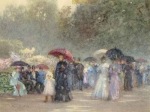
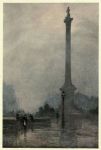









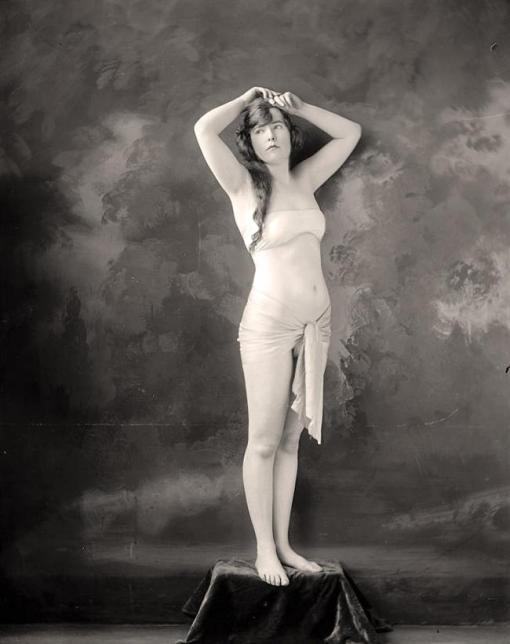
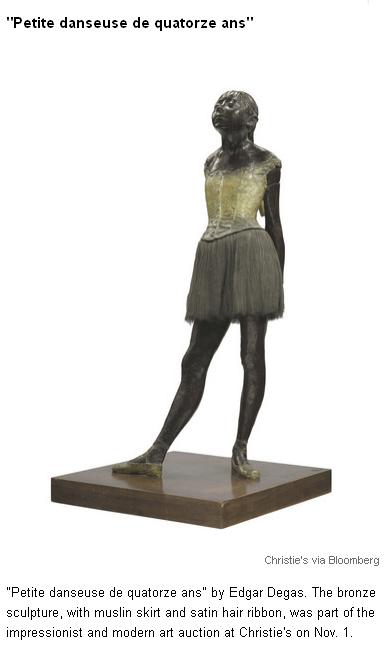


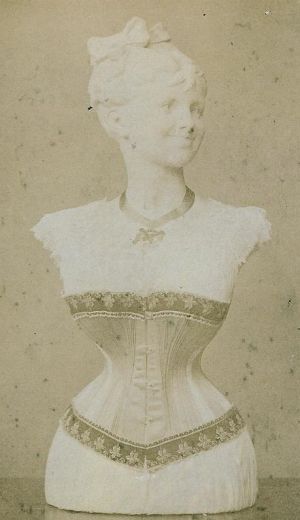

![The Reminiscences and Recollections of Captain Gronow [Joseph Grego] 1892](https://historyfan2.files.wordpress.com/2011/07/john-bull-and-his-family-at-an-ice-cafe-1815-gronow-newcastle-university.jpg?w=510)
